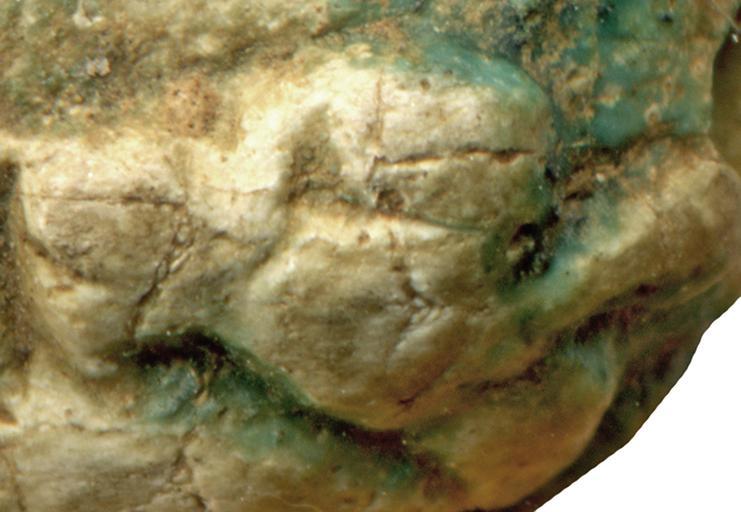MAKE A MEME
View Large Image

| View Original: | Egyptian_-_Scaraboid_with_Crouching_Calf_-_Walters_4270_-_Detail_A.jpg (900x622) | |||
| Download: | Original | Medium | Small | Thumb |
| Courtesy of: | commons.wikimedia.org | More Like This | ||
| Keywords: Egyptian - Scaraboid with Crouching Calf - Walters 4270 - Detail A.jpg The ancient Egyptians believed that the dung beetle the Scarabaeus sacer was one of the manifestations of the sun god Representations of these beetles were used as amulets and for ritual or administrative purposes Amulets with oval base and half-ovoid back representing other animals are named scaraboids This scaraboid displays the representation of a crouching calf The calf is facing to the right the head as well as the tail raised and bent back to the center of the back The figure fills the whole oval space; head tail and extremities are very close to the body giving a compact and balanced impression The unusual height of the scaraboid conveys the idea that the calf is crouching on top of a rock or pedestal The base has a symmetrically long-oval shape The bottom shows the figure of a squatting divine child which has the finger to the mouth an ankh-sign meaning life is in front of his face a lotus plant with bud hanging down above his knees and an nb-basket below his body The figure of the child is executed in sunk relief the high slim waist as well as the long neck and head make it likely that the piece was created in the Amarna or early Post-Amarna Period; the layout is well organized the figure of the child centered and only the nb-basket is a little small An oval line frames the arrangement The calf-scaraboid with divine child on the bottom has a renewal connotation The calf represents the daily reborn youth sun god of the celestial cow and the child represents probably not only the solar child but also the king Akhenaten between 1351 1334 BC New Kingdom; Amarna light beige faience with green-blue glaze cm 0 8 1 1 1 6 accession number 42 70 39367 Henry Walters Baltimore 1929 mode of acquisition unknown Walters Art Museum Henry Walters Acquired by Henry Walters 1929 place of origin Egypt Walters Art Museum license Ancient Egyptian scarabs in the Walters Art Museum Media contributed by the Walters Art Museum needs category review | ||||